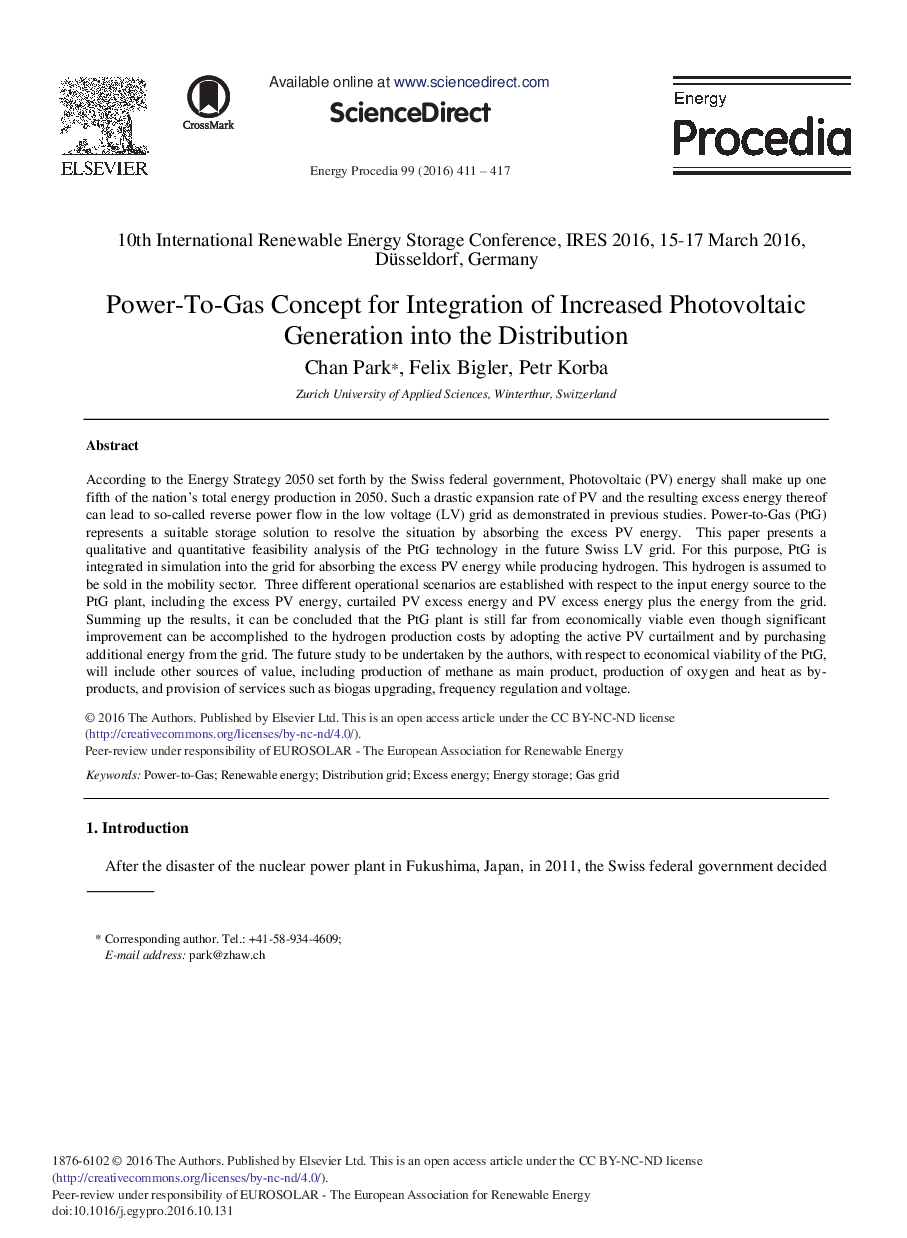| Article ID | Journal | Published Year | Pages | File Type |
|---|---|---|---|---|
| 5446693 | Energy Procedia | 2016 | 7 Pages |
Abstract
According to the Energy Strategy 2050 set forth by the Swiss federal government, Photovoltaic (PV) energy shall make up one fifth of the nation's total energy production in 2050. Such a drastic expansion rate of PV and the resulting excess energy thereof can lead to so-called reverse power flow in the low voltage (LV) grid as demonstrated in previous studies. Power-to-Gas (PtG) represents a suitable storage solution to resolve the situation by absorbing the excess PV energy. This paper presents a qualitative and quantitative feasibility analysis of the PtG technology in the future Swiss LV grid. For this purpose, PtG is integrated in simulation into the grid for absorbing the excess PV energy while producing hydrogen. This hydrogen is assumed to be sold in the mobility sector. Three different operational scenarios are established with respect to the input energy source to the PtG plant, including the excess PV energy, curtailed PV excess energy and PV excess energy plus the energy from the grid. Summing up the results, it can be concluded that the PtG plant is still far from economically viable even though significant improvement can be accomplished to the hydrogen production costs by adopting the active PV curtailment and by purchasing additional energy from the grid. The future study to be undertaken by the authors, with respect to economical viability of the PtG, will include other sources of value, including production of methane as main product, production of oxygen and heat as by-products, and provision of services such as biogas upgrading, frequency regulation and voltage.
Related Topics
Physical Sciences and Engineering
Energy
Energy (General)
Authors
Chan Park, Felix Bigler, Petr Korba,
